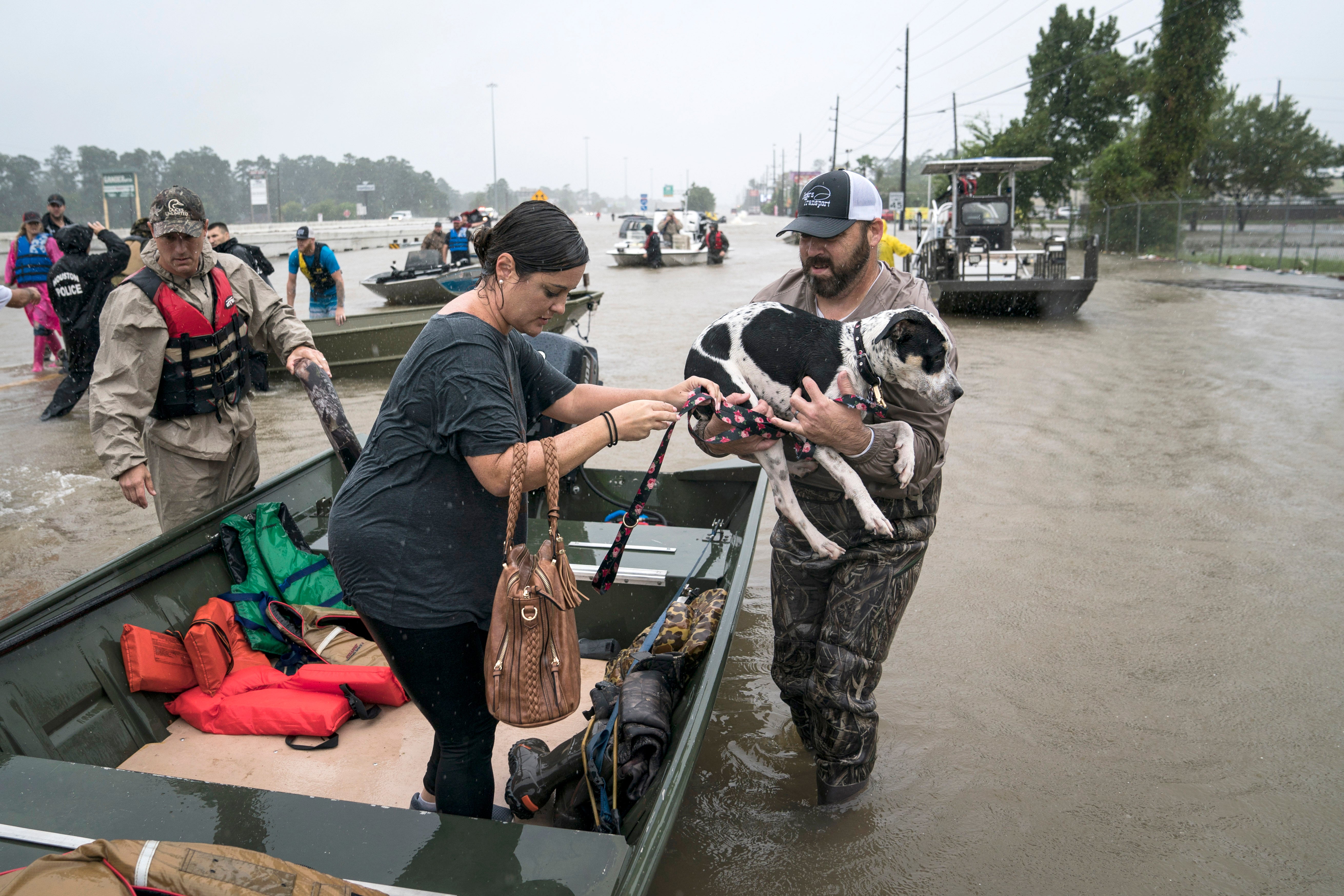
Emergency officials have long pondered how to convince the public to follow evacuation orders.
Now they have an answer.
Use fear.
Bombard the public with images of blazing wildfires and crashing waves.
Warn that people who stay home will have no electricity, water or emergency rescue.
Remind everyone of the most recent disaster to hit their community—and how miserable it was.
“People want to see visual images of danger. They’d like to see the fire coming over the ridge before they take action,” said Carol Freeman, a senior preparedness analyst at Argonne National Laboratory’s National Preparedness Analytics Center.
Assigned by the Federal Emergency Management Agency, Freeman and a team of Argonne researchers analyzed 127 studies of evacuation strategies and summarized their findings in a report published recently by FEMA.
The 52-page review aims to help officials craft messages that convince people to heed evacuation orders. It emphasizes the power of doomsday images, social cues such as watching neighbors evacuate, and messages laced with words like “dangerous” and “emergency.”
The report also provides fascinating insight into the human psyche.
Women are far more likely than men to evacuate or take protective actions to shelter in place, researchers have consistently found.
People who consider themselves individualists often think warnings are overblown and prefer the “stay-and-defend” strategy over evacuation. Such people are “more likely to be men,” Argonne researchers found.
Parents with children at home agonize over whether to evacuate and often delay making a decision.
Families with pets at home often refuse to evacuate because they fear they will be barred from emergency shelters or other accommodations.
Some studies have shown that people with lower education and income levels are less likely to evacuate, possibly because they feel they cannot afford to stay in a hotel.
People with higher income levels are likely to evacuate in multiple groups, at different times, using multiple vehicles—which makes congested roads even more congested.
“We know that people don’t necessarily follow an evacuation order,” Freeman said. “We wanted to provide emergency managers with research-based strategies to help them create more effective communications with their communities.”
“In addition to emergency managers,” said Kyle Pfeiffer, director of Argonne’s National Preparedness Analytics Center, “the audience here is decision-makers—elected and appointed officials who are deciding about issuing evacuation orders. Hopefully, they’ll understand the implications of their decisions.”
Evacuation orders are a serious business.
Major U.S. hurricanes have killed 6,500 people since 1980, according to NOAA. The leading cause of death is surging water, not howling winds. People drown in their homes while they shelter in place and in cars as they make ill-fated attempts to flee.
When Superstorm Sandy hit the Northeast in 2012, roughly half of the 159 deaths were due to drowning. Half of the drowning deaths occurred in homes that were in areas under mandatory evacuation orders, the federal Centers for Disease Control and Prevention found.
Drowning deaths in evacuation areas are “preventable” with more effective warnings, the CDC said.
Many studies have shown that people widely ignore evacuation orders—particularly those deemed “voluntary”—and have provided ample insight into the reasons.
The new Argonne report offers antidotes in blunt language.
- Highlight the consequences of failing to evacuate “including lack of water and electricity and the potential duration of those impacts.”
- Urge people to evacuate immediately “by noting when it will no longer be safe to evacuate or for emergency personnel to attempt rescues as the storm gets close.”
- Reassure people who are worried about evacuating by broadcasting messages such as “evacuating will keep your family and/or your pets safe.”
- Grab the public’s attention with words such as “dangerous” and “emergency” but don’t go overboard with “scare language” such as “certain death.”
“It’s OK to make people raise their concern. But it has to be married with their ability to control the danger,” Freeman said. “There’s research that if you try to scare people too much, people are going to zone out.”
One memorable scare tactic occurred during Hurricane Katrina when authorities told people to write their Social Security numbers on their skin if they refused to evacuate. “Research is inconclusive on how effective that was,” Pfeiffer said.
“You have to make people concerned and believe the risk is real,” Freeman said, “but you can’t do it in an over-the-top way.”
Reprinted from E&E News with permission from POLITICO, LLC. Copyright 2021. E&E News provides essential news for energy and environment professionals.


